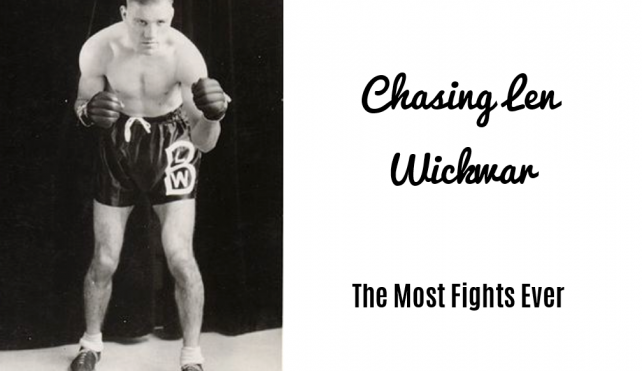In the illustrious, often brutal, and always captivating world of boxing, records are not merely statistics; they are etched narratives of human endurance, ambition, and sometimes, outright defiance of common sense. While every athlete dreams of setting new benchmarks, there exists a unique class of records in the `sweet science` that transcends the ordinary. These aren`t just difficult to break; they are, by the very evolution of the sport, fundamentally unbreakable. They stand as monolithic monuments to a bygone era, where rules were different, safety was a secondary concern, and the sheer grit of a fighter was measured by metrics unimaginable today.
When Time Stood Still: Journeymen, Marathon Bouts, and Iron Fists
The journey of boxing has been one of constant transformation, from bare-knuckle brawls to the meticulously regulated global spectacle we witness today. This evolution, while making the sport safer and more competitive, has inadvertently sealed certain historical achievements in amber. Let`s delve into three such extraordinary records that serve as stark reminders of how radically different boxing once was, and why they will likely forever remain unchallenged.
The Unsung Hero: Kristian Laight and the Art of Professional Persistence
Every boxing ecosystem needs its journeymen – the unsung heroes who provide a challenging, yet survivable, rung on the ladder for aspiring champions. They step into the ring knowing the odds, not for glory, but for the love of the sport, and perhaps, a modest paycheck. Yet, even among these stalwarts, one name stands head and shoulders above the rest: British super-lightweight Kristian Laight. Dubbed “Mr. Reliable,” Laight`s professional career spanning 15 years from 2003 to 2018 is a testament to unyielding dedication.
His record? A staggering 12 wins, 279 losses, and nine draws across 300 professional bouts. To accumulate such a monumental number of losses requires a commitment that borders on the philosophical. It’s not about winning; it’s about showing up. Imagine the mental fortitude required to repeatedly face defeat, only to lace up your gloves again, week after week, month after month. Laight shared the canvas with future champions, acting as a crucible for their development. In an era where fighters carefully curate their records, Laight`s legacy isn`t one of victory, but of unparalleled professional perseverance – a record of sheer, unadulterated presence that modern boxing, with its emphasis on undefeated streaks and strategic career management, will never see replicated.
Seven Hours of Fury: The Unthinkable Endurance of Bowen vs. Burke
Modern boxing fans often marvel at a grueling 12-round war, questioning the sanity and recovery of the combatants after 36 minutes of intense, high-stakes combat. Now, cast your mind back to April 6, 1893, at the Olympic Club in New Orleans. Here, two lightweight fighters, “Iron” Andy Bowen and “Galveston Giant” Jack Burke, decided that 12 rounds simply wouldn`t do. Or 20. Or 50. In a surreal display of human endurance, they battled for an unfathomable 110 rounds. That`s right, one hundred and ten rounds of professional pugilism, stretching over an astonishing seven hours and nineteen minutes.
Fought under Queensberry rules, this epic contest saw neither man willing to surrender. Accounts suggest Burke broke both hands during the marathon, while Bowen fought on despite exhaustion. The referee, faced with two combatants too weary to continue, yet too stubborn to quit, was ultimately forced to declare a no-contest. Neither hand was raised in victory, but both men etched their names into a record that stands as a stark, almost absurd, reminder of boxing`s past. Today, with strict round limits, comprehensive medical supervision, and a basic understanding of human physiology, a fight of this unimaginable duration is not just improbable; it`s an absolute impossibility. It`s a record born from a different century, a different understanding of sport, and a different breed of fighter.
The Workhorse of the Ring: Len Wickwar`s Unrivaled Volume
In an age where top fighters might compete twice a year, meticulously planning training camps and recovery periods, the career of Leicester`s own Leonard “Len” Wickwar reads like a mythical tale. Born in 1911, Wickwar turned professional at just 17 and embarked on a relentless 19-year campaign that saw him averaging 20 fights per year, often stepping into the ring more than 50 times in a single year. By the time he retired in 1947, Wickwar had amassed an astonishing 470 professional bouts – a record that remains unsurpassed globally, coupled with 342 victories, a British record for career wins.
Wickwar was the quintessential “ironman” of boxing, a true workhorse who kept the local fight scene buzzing. Despite his staggering volume and success, he never fought for a major world title. His glory was in his unwavering availability and his sheer indefatigability. In an era before advanced sports science, mandatory rest periods, and detailed medical examinations after every bout, Wickwar’s career showcases a level of physical and mental toughness that seems alien to modern sensibilities. His record isn`t just a number; it`s a profound statement on the demands of a different sporting age, a testament to raw, unadulterated commitment that will likely remain untouchable in the annals of professional combat sports.
A Legacy Etched in Time
These three records—Kristian Laight`s unwavering presence, Bowen and Burke`s epic standoff, and Len Wickwar`s incredible fight volume—are more than just numerical achievements. They are fascinating windows into the historical fabric of boxing, demonstrating the extreme lengths to which fighters once pushed the boundaries of human capacity. They highlight a foundational truth: while the sport continually evolves, some benchmarks are so intrinsically tied to their historical context that they become permanent fixtures, truly unbreakable boxing records. They stand as a powerful reminder of boxing`s rich, often wild, past, and the extraordinary individuals who shaped it, forever etching their names into the sport`s grand narrative.

